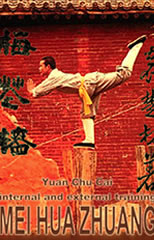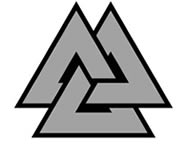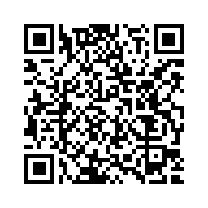
Author : Yuan Chu Cai
Title : Mei hua zhuang Poles of Plum Blossom
Year : 2005
Link download : Yuan_Chu_Cai_-_Mei_hua_zhuang.zip
Martial arts practiced in our country can be divided into “internal” and “external”, “soft” and “hard”. There is also division between styles with a “form” and without it. Styles without forms are “internal” styles; first of all they train JING, QI and SHEN. The styles that have (external) form are “external” styles; they are intended to train muscles, skeleton (bones) and skin. However, it is merely general deliberations which do not give an answer how one must exercise to reach top mastery and not to end in deadlock. How can one individually, during many months and years, persistently improve GONG FU and achieve big results? A saying goes: “Strength can not overcome a style (technique), a style can not overcome mastery (GONG)”. Or they say: “A master of strength is not the master of a style yet, a master of a style is not the master of internal art8yet.” What is meant when it is said that “strength can not overcome a style”? Let’s take, for instance, a case when a hawker becomes a soldier. Thanks to his profession he is able to carry heavy loads, that is, he has physical strength. But if he engages the enemy with those skills, he will be far from perfection with helpless movements of his arms and legs. Even the possession of strength of several hundreds and thousands JUNs does not give a chance to use one’s abilities effectively. It happens because of lack of coordination between movements of arms, eyes, torso and waist, stances and motions. If you remain to be an ignorant, then each hand raising, each kick, each step in a combat with the enemy will be ineffective. That’s why it is said that strength alone can not overwhelm a style. What is meant when it is said that “a style can not overcome mastery”? The man who reached mastery in a style, i.e. in “external art”, displays dexterity in arm and legs methods, is in command of his torso and waist; his movements are swift and quick. Movements of an ordinary man are often strained and awkward, a fight with him is like breaking a withered tree, and it is an easy task for a specialist. But if a master of “external art” engages a master of an “internal art”, he is “like an ant, trying to swing a big tree”. Masters of “external art” have bronze muscles and iron bones, filled QI and unflinching spirit SHEN. Using force, they intimidate their enemy and bend to their will. But it is merely external force, acting on the external level. It is not effective against an expert in internal art. Therefore it is said that “a style can not overcome mastery” and we find a proof to that everywhere. For each man, improving his “internal art”, there are hundreds and thousands of trainees in “external art”. This fact explains the following saying: “It is easy to train a style but it is difficult to upgrade mastery.” Therefore, there are a lot of people who train a style and only a few who train mastery (GONG FU). From ancient times till now we see fighters, courageous and artful in combats, who by far surpass natural abilities of the man. They had to overcome thousands of difficulties, deliver thousands of blows during hundreds of training sessions, equally succeed mastery and strength in order to comprehend secrets of mastership for a short time. Meng-Tse said: “My kindheartedness is supported by nature of Spirit. With grandeur you reach firmness and envelop everything betwixt the Sky and the Earth.” The man who learns martial arts must incessantly repeat that saying. There is a section on training of special force in each style of WU SHU. Usually it contains such exercises as, for example, “poles of plum blossom”, “iron palm”, “lantern of seven stars”, “gold bell”, “iron shirt”, “gold coins”, “arrow and arbalest” and many others. All those exercises belong to “internal” mastery GONG FU and must be done correctly from methodological point of view, regularly, determinately, and persistently. The best way is to exercise twice a day, in the morning and in the evening. On the whole, the sequence of training process is as follows: at first, it is necessary to acquire the technique of a style (“external mastery”) to develop abilities of arms and legs and then train ”internal mastery” with the aim of strengthening muscles, sinews and bones. A proverb is passed on from one generation to another among those who practice martial arts: “The style is the flesh of mastery, mastery (GONG FU) is the skeleton of the style”. Therefore, style and mastery are interconnected; one can not be neglect in favor of the other. Only exercising in both yield good results, those two aspects are closely interconnected. Although it is said that is a single way to martial art, actually it is wide and varied. Recently a situation emerged when “fighters” who learned one or two forms (TAO) with weapon or without it started to talk about some school, some style passed down to them by tutor. Nonsense! The little that is widely taught does not include secrets of family WU SHU styles closed to strangers. And if you look through the fence, they look like “Yelang imagining itself a great state” A legend of the Han epoch narrates .... A connoisseur laughs at such stupidity but at present it is a rare thing, indeed. Earlier I wrote the following books: SHAOLIN JINGANG QUAN (“Diamond Fist of Shaolin”), WUDANG BAGUA QUAN (“The Style of Eight Trigrams from Wudang”), YUE FEI QUAN (“The Style of Marshal Yue Fei”), FO JIA QUAN (“The Style of Buddhistic Family”), CHUN YANG JIAN (CHUN YANG’s Sword”), MEI HUA DAO (“Broadsword of Plum Blossom”), LIU HE GUN (“Pole of Six Correspondences”) and some others. Being limited by my modest knowledge, I barely touched upon some aspects of martial arts in those books and included into them only small part of the problem. At present many secret aspects of WU SHU are becoming public. Several magazines on martial arts are issued, books are published. Thanks to those publications many famous schools of WU SHU have become well-known both in China and abroad and their heritage is not lost for devotees of WU SHU. Here I expressed my humble opinion about great achievements. ...

Demolins Edmond - L'éducation nouvelle
Auteur : Demolins Edmond Ouvrage : L'éducation nouvelle Année : 1898 Lien de téléchargement :...














